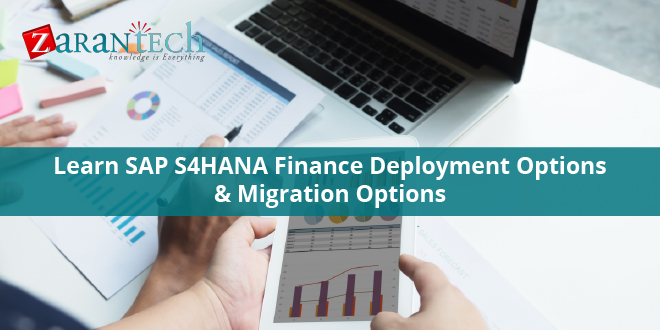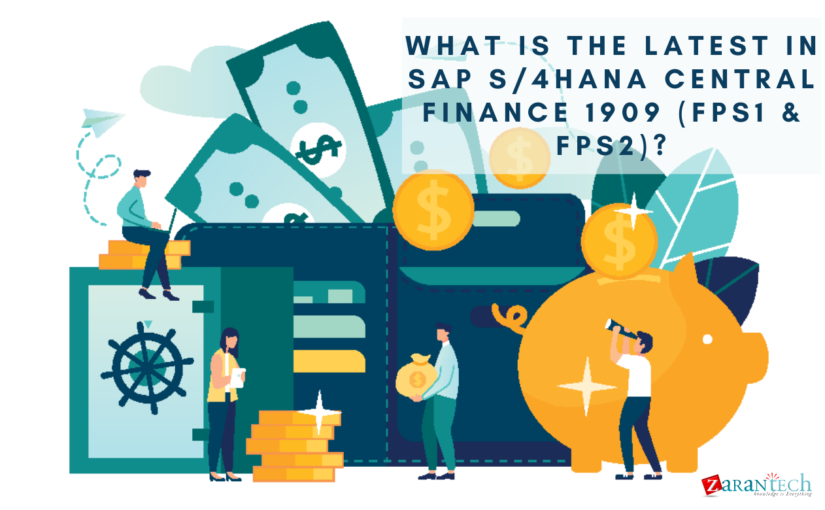Know the Differences between SAP Central Finance or SAP S/4HANA Finance
Category: SAP S/4HANA Central Finance Posted:Jul 24, 2020 By: Serena Josh
SAP S/4HANA Finance
The SAP S/4 HANA Finance offers planning, consolidation, accounting, and compliance on Cloud technology. Even more, it offers SAP Accounting, Cash Management, and all financial elements of the organization. These are Financial Accounting, Management Accounting, Bank Management Accounting, Profitability Analysis & Bank ledger Accounting, etc.
Features of In-memory database in SAP S/4HANA (Central Finance vs S/4 HANA)
Keep Data in Memory– Although you still need the nonvolatile storage (Disk-based memory) to make sure that write operations are durable. Since the read operations can anticipate that all relevant data resides permanently in the main memory. Thus you can execute them without disk I/O.
Optimize the In-Memory Data access– Since all the data is easily available in the main memory. As a result, the data movement between the CPU cache and the main memory becomes the new performance bottleneck. SAP HANA fixes this by using the columnar store and effective data compression techniques. Thus it successfully reduces the total size of data in memory. Not only this, however, it additionally accomplishes high hit ratios in the various caching layers of the CPU.
Support Massive Parallel Data Processing– Modern computer systems have a continually enhancing variety of processing cores. In order to natively take advantage of enormously parallel multicore processors, SAP HANA handles the SQL processing instructions into an optimized model. Better, this model allows parallel execution as well as scales incredibly well with the number of cores. The optimization includes partitioning the data in areas for which the estimations can be executed in parallel.
SAP Central Finance
Central Finance feature concerns as a part of the answer to Central Finance vs S/4 HANA.
Central Journal Approach– Central Finance Vs S/4 HANA
Central Finance is not an item instead deployment model for SAP simple Finance, formerly known as the “Central Journal “approach.
How does it work?
With Central Journal as a starting point to Central Finance, you replicate the posts from source systems into the central instance in real-time. This is called as Initial loads in Central Finance. This is assisted by a software tool called SAP Landscape Transformation (SLT), which we can release centrally or decentrally.
Tools in SAP Central Finance
SLT tool
In financial systems from any software vendor, you store the data from the financial postings in database tables. The SLT tool runs at a database level. When you insert or update a data record in the database table, a database trigger is written SLT responds to this database trigger and retrieves the data records that were inserted or updated.
SAP HANA Sidecar– Central Finance vs S/4 HANA
This concept is in use at numerous companies for SAP HANA sidecar scenarios. It was introduced in 2011 as a deployment option for SAP HANA accelerators. Its main objective was to quicken critical reports, processing steps, as well as transactions with SAP HANA’s in-memory capabilities. The SAP ERP sidecar scenarios run an SAP HANA database in parallel with the classic data source.
Moreover, Rather than replicating a data record directly into the target database, SLT can move data records to a programming interface, such as an ABAP function module.
Central Journal Interface
When you publish and store a financial document in the database of the source system, the SLT can retrieve the data record and feed it into the corresponding Central Journal interface. The interface posts a new financial document in the central instance running on SAP Simple Finance.
CJI Processing
Initially, SLT uses the standard accounting interface to augment and complete the financial document. It is based on the master data and customizing configured in the central system. Then it checks whether the financial document, the master data used, and the account assignments are consistent. It continues the document in the data format required by the database tables of SAP Simple Finance.
Then, the newly posted financial file keeps the reference to the original document of the sender system. You can use it like any document posted in the central system– even if it originates from a non-SAP source system.
Bottom line
Hope this blog article will clear all the confusion regarding the SAP S/4HANA Finance & SAP Central Finance. This will surely help you to understand in a better way.
If you are planning to boost your skills, choose our best online training platform, and learn from industry experts. So what are you waiting for? Click ZaranTech, to skyrocket your career with the unique learning needs because Learning Never Exhausts The Mind.
Happy Reading!




 99999999 (Toll Free)
99999999 (Toll Free)  +91 9999999
+91 9999999